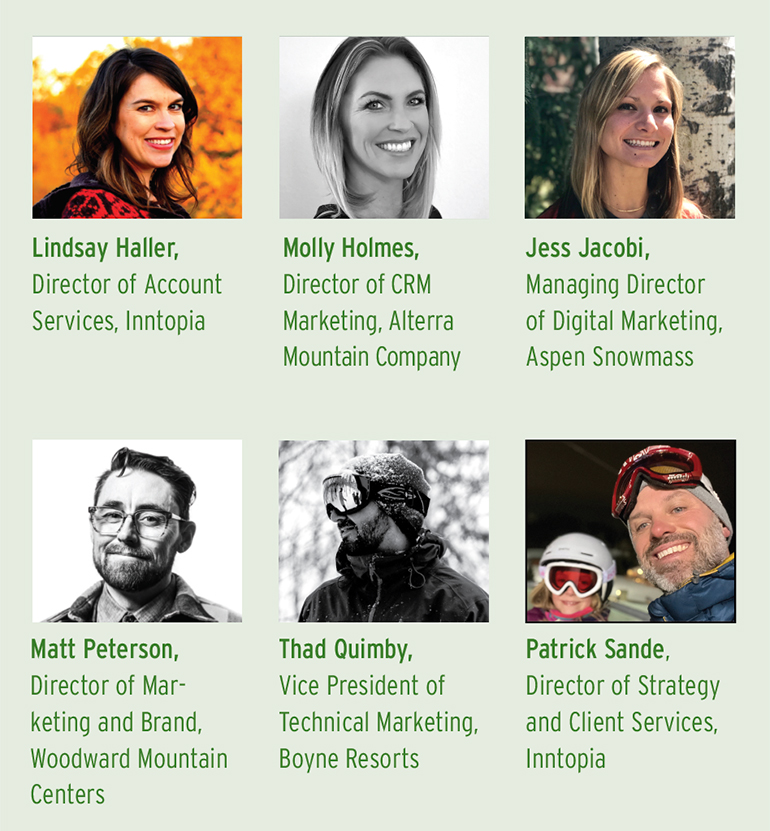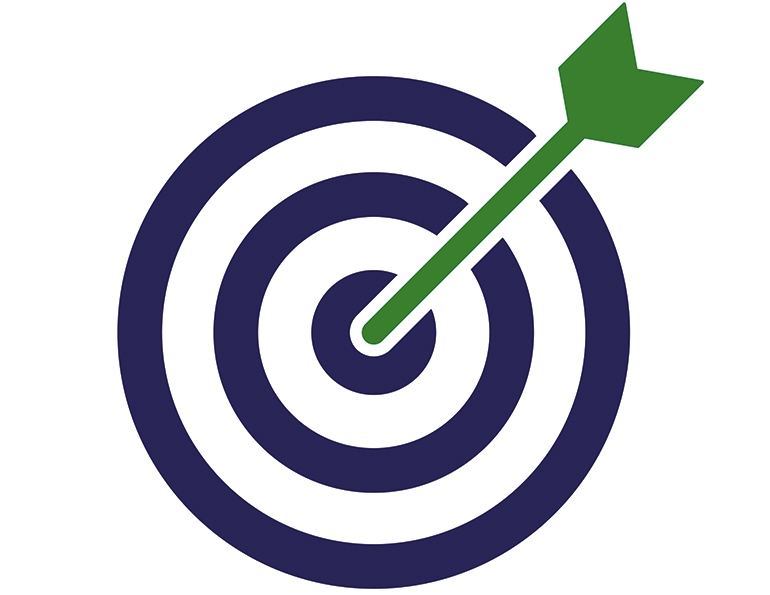There’s guest data and there’s marketing, but where do the dots connect? It’s a simple question with hundreds of answers. From being sure you capture the right data to understanding which data points create the biggest marketing and sales opportunities, the hardest part of turning guest data into revenue isn’t doing more things—it’s doing the right things.
We asked six of the brightest marketing minds in the industry for their advice, pointers, and best practices on gathering and using guest data. Our panel includes:

BASIC DATA CAPTURE
You can’t use data to inform your marketing unless you have it. Simple data capture best practices ensure you get valuable, useful information about your guests. Here are some tips to ensure you’re capturing what you need.
Email. “There is so much value and potential in acquiring a new email address. Consider incentivizing guests to subscribe to your email list by offering them something of value in exchange.”
—Patrick Sande
Zip code. “If you can capture one extra piece of info, consider your guests’ zip code. Location data allows you to understand things like purchase patterns by geography and can help inform business decisions, product offerings, pricing, paid media spend, promotional packaging and offers, and so much more.”
—Lindsay Haller
Combined attributes. “While individual attributes like email or mobile phone are important, it’s usually a combination of attributes that give you the most value. An easy place to start is to capture first name, last name, and email at a minimum. This gives you the basics to match against your larger database and allows you to start communicating with a guest.”
—Thad Quimby
Incentivize advance purchase. “Creating advance purchase discounts and offers will not only help save your guests money, but it also encourages your guests to purchase through channels that typically collect better, more robust data than if they purchase at the front lines.”
—Molly Holmes
ADVANCED DATA CAPTURE
At some point, capturing some data isn’t enough. You’ll want more, better, and deeper data around your guests. Capturing this data is more about knowing where to look and using the right tools than applying sophisticated strategies.
E-commerce captures. “Covid-era restrictions like contactless booking have enhanced many resorts’ email capture rates versus traditional window or on-site capture rates. Don’t let those practices go just because pandemic restrictions have loosened.”
—Lindsay Haller
Frictionless data collection. “We’re always looking for more data, but it’s also important to evaluate if the juice is worth the squeeze in how we collect it. Gated Wi-Fi is a great example. Customers may speed through Wi-Fi access forms, resulting in incorrect, incomplete, or even fake information. You’ve added friction to the guest experience only to receive a fraction of usable data. Is it worth it?”
—Thad Quimby
QR code data. “QR codes offer the perfect touchless, one-step process for your guests to do things like check in to their hotel, order food at your cafeteria, or even purchase lift tickets online while at your resort instead of waiting in the lift ticket line. Every time they do so, you collect their data.”
—Molly Holmes
Quality over quantity. “It’s better to have a smaller database of useful, clean, and trustworthy customer data, than a large database of mixed-quality data. Establish data quality standards by taking time to decide what minimum customer attributes you need to capture. If a data source doesn’t meet your requirements, work with partners and vendors
to improve.”
—Thad Quimby
SURVEY AND BEHAVIORAL DATA
Personal information like name, email, or zip code help you know who is who. Attitudinal data points that come from surveys and interactions with your staff are crucial to understand what those guests are looking for and how well your resort’s experiences and marketing messages align with those needs.
Budget-friendly surveys. “If you have a small budget, carve out $300 and get something like Survey Monkey. It’s not as pretty as some white label solutions, but it gets the job done.”
—Matt Peterson
Guest interests. “Align your content strategy with your email opt-in form to make it very transparent what the guest is signing up for. Enable your guests to tell you more about what they’re interested in so you can use those attributes when sending communications.”
—Jess Jacobi
Case management tracking. “It’s important that guest service teams track interactions in a case management tool so the business can identify trends, prioritize, and allocate resources to fix the root cause of the issue. Feed any open customer issues into a marketing automation system and temporarily pause marketing for that customer.”
—Thad Quimby
Purchase-based surveys. “Create lists based on what people purchased and then build a survey for each list. Favorite part? Least favorite part? Would they recommend it? Do they plan on buying again? Write open-ended questions that allow for more feedback. These types of answers can help your fellow resort leaders make better decisions about their businesses.”
—Matt Peterson
ANALYZING GUEST DATA
The next step is to dig into the information you’re aggregating to identify trends and opportunities. Knowing what to do, what not to do, and where to begin can give you a head start when it comes to building marketing campaigns on what you find.
Start clean. “Take time to get to know and clean up your customer data before diving into customer analysis. Speaking from experience, you can burn hours building dashboards and metrics only to realize that the result isn’t accurate because of a gap in the data.”
—Thad Quimby
Share with leadership. “Don’t let data get dusty with an email forward to a dashboard. Set up meetings with key stakeholders. Sit down and go through the data with your resort leaders and make sure they understand what you’re showing them. We marketers forget that other people don’t love dashboards like we do. Help them see the value.”
—Matt Peterson
Combine online and offline data. “Use pixels on your website and URL tags in your marketing communications so you can track web behaviors of known customers who go to your site from one of your marketing campaigns, like an email promoting advance lift ticket purchase discounts. Build audiences that combine online and offline data, like an audience who shopped for lift tickets on your site but didn’t purchase.”
—Molly Holmes
Analyze usage. “One of my favorite data sets to analyze and correlate to other behaviors is season pass scan count data. Because it’s such a detailed look at the behavior of a valuable segment of guests, it can shed light on great insights like renewal rates by usage. This in turn can fuel some really powerful campaigns like targeting low-use passholders to increase renewal rates the following season.”
—Patrick Sande
USING GUEST DATA
Once you understand what you have to work with, it’s time to use the data by building segments, campaigns, and initiatives that help improve guests’ experiences and, in turn, their satisfaction and loyalty. Here are a few places to start.
Personalize. “Create an audience of ‘high value’ guests who have upcoming reservations at one of your properties and give that list to the front lines so they can give someone on that list a free upgrade when they check in. Likewise, use CRM (customer relationship management) data when someone is on your site or calls into the call center to create personalized experiences.”
—Molly Holmes
Pre-arrival. “Pre-arrival email campaigns based on a guest’s arrival date are an easy win. This is a great opportunity to send some personalized emails containing dynamic content based on what that guest has (or doesn’t have) on the books for their trip.”
—Thad Quimby
Segmenting. “Segment your guests by key traits to keep communications across channels targeted and relevant. Segmenting is reflected in strong performance metrics and is a good tactic to test out more personalized communications.”
—Jess Jacobi
Active vs. less active. “Define what makes up an ‘active’ guest at your resort based on transactional data, email engagement data, and other indicators that show someone is engaging with your brand. Be careful not to use the audience as a filter for every campaign, so you give your less-active audiences a chance to re-engage with your marketing efforts.”
—Molly Holmes
DATA-DRIVEN AUTOMATION
Modern CRM or CDP (customer data platform) software automatically aggregates guest data. This hands-off process opens the door to add further automation to your marketing efforts so that your guests get timely, useful information and service.
Welcome program. “Treat an email signup as an RFP (request for proposal). A customer who signs up for your emails is expressing a clear interest in coming to your resort. Build a nurture program to welcome, educate, and convert these prospective customers into paying guests.”
—Patrick Sande
Reminders. “Think through what you can automate based on guest behavior and triggers in order to drive conversions or engagement. An email nudge when a guest leaves something in their cart, or a 10-day pre-arrival email with a cross-sell reminder for lessons, can be set up ahead of time, is super relevant and timely for guests, and can work for you all season.”
—Jess Jacobi
Post-purchase. “I am a huge fan of post-purchase emails to season passholders. Leveraging the purchase date of a season pass to trigger this type of email is a great way to recognize and thank some of your most loyal guests. This is also a great opportunity to educate them on next steps, drive upsell opportunities, and remind them of any benefits they get as a passholder.”
—Patrick Sande
End of season. “Leverage app or resort data to send end-of-day or end-of-season emails that highlight how many days they skied, mountains they visited, etc. Think Spotify end-of-year review, but for ski. At Aspen, we’ve reached out to our guests with the most Bowl laps and vertical and featured them in a blog as well.”
—Jess Jacobi
CRAWL, WALK, RUN
The most important part of turning guest data into opportunities is simply to start. Get data, then get more, and then get better, broader, and more accurate data. Along the way, create simple campaigns based on what you have, expand those campaigns as your data capture improves, add automation as you nail down data quality, and never stop improving.
Before you know it, your guest data will no longer just be sitting in a database gathering dust, but instead it will be fueling a powerful marketing machine that converts those data points into simple, targeted opportunities designed to improve the guest experience and increase revenue.






